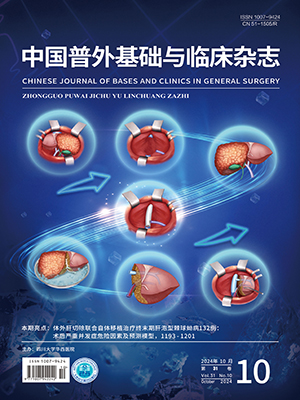Objective To probe the effects of lumbricus on wound healing after hemorroidectomy.
Methods After the solution made from artificial grown lumbricus was sprung to the wound of animal and patient after hemorroidectomy, the wound inflammation, wound healing and changes of laboratory determinations were observed and compared to those of the control group.
Results In animal study, lumbricus could inhibit the growth of staphylococci, bacillus coli and bacillus aeruginosus. The time of wound healing in experimental group was 4 days shorter than that in control group. At 4d and 7 day the numbers of the capillary, blood vessel endodermis and desmohemoblast desmocyte and splitting epithelium of trial group were much more than those of control group. At 4d the trial group′s numbers of splitting mesenchymal cell were much more than that of control group. From 3d on the wound healing and granulation filling of experimental group were much quicker than those of control group. In clinical study, the time of wound healing of trial group ( a mean of 16.5 days) was shorter than that of control group (21.2 days). From 3d on, the epidermis′ growth speed of the trial patients was much quicker than that of control group and was without wound infection and granulation overproliferation.
Conclusion Lumbricus can inhibit wound inflammation response and accelerate wound healing. Lumbricus is inexpensive and easily preserved, and could be used on the wound after hemorroidectomy to accelerate wound healing.
Citation: LI Dongbing,WANG Pei,ZENG Yaohui,et al.. EXPERIMENTAL AND CLINICAL STUDY ON LUMBRICUS ACCELERATING POSTOPERATIVE WOUND HEALING AFTER HEMORROIDECTOMY. CHINESE JOURNAL OF BASES AND CLINICS IN GENERAL SURGERY, 2000, 7(1): 6-9. doi: Copy




